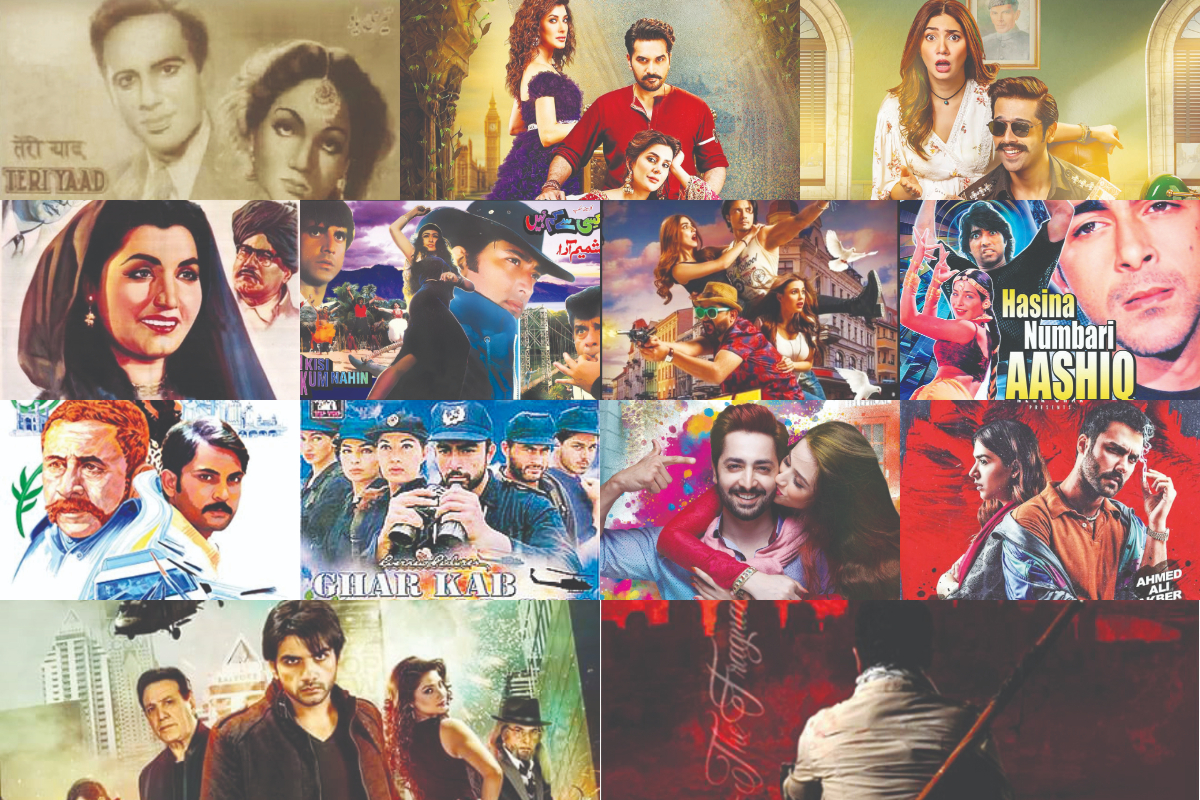
Compared with the past, the titles of the new films being produced in Pakistan are mostly based on clichéd catchphrases, new buzzwords, internet lingo and slapdash verbal contraptions
The initial years of Pakistani cinema were ruled by sweet-sounding names, lyrical descriptions and metrical and poetic film titles, boasting of some literary merit too. However, the titles of the new films, released with much media fanfare and social media hype, are poles apart from the lingual standards set by earlier film predecessors.
As strange as this sounds, the younger years of the country’s nascent film industry were pre-eminently ruled by a studious taste as well as an exquisite predilection for quality film titles. The examples include ‘Buut Tarash’ (1951), ‘Khizaan Ke Baad’ (1954), ‘Zehr-e-Ishq’, ‘Jaan-e-Bahar’ (1958), ‘Naghma-e-Dil’ and ‘Jago Hua Severa’ (1959). These titles were not out-of-this-world picks but rather mainstream choices, which exuded a finely cultured aura of the 1950s, 60s and, to some degrees, 70s.
Then comes the tipping point for the film industry in terms of gradually reducing number of films produced every year and also in respect of quality the industry was once known for in its early decades.
Historically speaking, ‘Teri Yaad’ (1948), the title of the first ever feature film released in Pakistan, is just the inaugural glimpse of what ensued afterwards and every next film, released over the initial three decades, had an effusive and figurative title attached to it. The film’s titles such as ‘Anokhi Dastan’ (1950), ‘Beqarar (1950), ‘Do Ansoo’ (1950), ‘Bheegi Palkain’ (1952), ‘Barkha’ (1953), ‘Gumnaam’ (1954), ‘Khizaan Ke Baad’ (1954), ‘Darbar-e-Habib’, ‘Lakht-e-Jigar’ (1956), ‘Ishq-e-Laila’, ‘Thandi Sadak’, ‘Noor-e-Islam’ (1957), ‘Sitaroon Ki Duniya’ (1958), ‘Tere Baghair’ (1959), ‘Shaam Dhaley’ (1960), are to name a few orthodox examples out of many that characterised the early era of filmmaking in the country.
The most common element, as found in vintage film titles, is their inspiration from the poetry, both contemporary and of the past. For instance, such title as ‘Aur Bhi Gham Hain’ (1960), ‘Dil-e-Nadan’ (1960), ‘Subhah Kahin Sham Kahin’ (1961) and ‘Awaz De Kahan Hai’ (1962), are not short of metrical excellence, as are ‘Chiragh Jalta Raha’, ‘Eik Manzil Do Rahain’, (1962), ‘Ishq Per Zor Nahin,’ ‘Preet Na Jane Reet,’ and ‘Ek Tera Sahara’ (1963).
Things do not stop here as the decade of the 60s was an extraordinary era when the title of every next film surfaced as being in a class of its own, e.g. ‘Eik Dil Do Dewaane’, ‘Pyaar Na Karna Nadan’ (1964), ‘Saaz-o-Awaz’, ‘Tere Shehar Mein’ (1965), ‘Aag Ka Darya’, ‘Dard-e-Dil’, ‘Naghma-e-Sehra’ (1966), ‘Lahu Pukare Ga’, ‘Phir Subah Ho Gi’, ‘Shola Aur Shabnam’ (1967), ‘Dil Diya Dard Liya’, ‘Dil Mera Dharkan Teri’, ‘Eik Musafir Eik Haseena’, ‘Chand Aur Chandni’, ‘Jaan-e-Azro’, ‘Jahan Baje Shehnai’, ‘Main Kahan Manzil Kahan’, ‘Soeey Nadya Jage Pani’, ‘Mera Ghar Meri Janat’ (1968), ‘Geet Kahin Sangeet Kahin’, ‘Fasana-e-Dil’, ‘Dil-e-Baitab’, and ‘Baharen Phirbhi Aingi’ (1969).
Though the fall of Pakistan’s film industry had already begun well before reaching its pinnacle, the era of the 1970s was not different either, bringing to the fore such classic film titles as ‘Aansoo Ban Gaey Moti’, ‘Eik Phool Eik Pathar’, ‘Jale Na Kyun Parwana’, ‘Jhuk Gaya Aasman’, ‘Mohabat Rang Laigi’, ‘Phir Chand Nikle Ga’, and ‘Ye Raste Hain Pyar Ke’ – all in the single year of 1970.
Thanks to an educated and erudite breed of screenwriters, songwriters and music composers with a rich literary background at their disposal, combined with directors, producers and filmmakers, the people who were at the helm of the industry were au currant with the prevailing literary scene, locally and internationally – especially, some of whom were bibliomaniacs extraordinaire and polymaths to the core.
The year 1971 welcomed films with classy and poetic titles like ‘Ansu Bahae Pathron Ne’, ‘Chiragh Kahan Roshni Kahan’, ‘Jalte Soraj ke Neeche’, ‘Khak Aur Khoon’, ‘Mera Dil Meri Arzoo’, ‘Neend Hamari Khwab Tumhare’, and ‘Salaam-e-Mohabbat’.
Despite a reduced number of films, notably because of the separation of the erstwhile East Pakistan, the truncated and miserably shorn-of-talent film industry of Pakistan was still able to retain its literary focus as in 1972 many films charmed the audience with beautiful titles. The examples include, ‘Afsana Zindagi Ka’, ‘Baharo Phool Barsao’, ‘Gata Jaye Banjara’, ‘Jahan Barf Girti Hai’, ‘Meri Zindagi Hai Naghma’, and ‘Yeh Raaste Hain Pyaar Ke,’ followed by ‘Baharon Ki Manzil’, ‘Daman Aur Chingari’, ‘Khawab Aur Zindagi’ (1973), ‘Mera Naam Hai Mohabbat’, ‘Jub Jub Phool Khile’ (1975), ‘Pehli Nazar,’ (1977), ‘Badalte Mausam’, ‘Mehndi Lagi Mere Haath’ and ‘Mehal Mere Sapno Ka’ (1980).




The downfall is mainly ascribed to the rise of the military rule in the country, which introduced strict film censorship regulations together with social restrictions and moral barriers. To the contrary, the TV industry, in the same military regime, was still able to produce the most successful plays and drama serials of the history of Pakistan Television, mainly because of it still being run by the lot of professionals and creative people in all its departments, particularly in scriptwriting and production. In the film world, on the other hand, the reins were now taken by non-professional opportunists with the least background in the cinema, let alone formal education or any liking for literature, thus availing themselves of the predestined exodus of the former but relatively capable lot, which had now vanished into the thin air of the ineluctable fate.
Whatever the reason for the downfall, it was not a coincidence that films with titles like ‘Haseena Maan Jayegi’, ‘Haye Yeh Shohar’ (1980), ‘Mian Biwi Razi’ (1982) and ‘Naam Mera Badnam’ (1984), which heralded the disastrous beginning of the 80s, made the ground ready for films titles such as ‘Miss Colombo,’ (1984), ‘Miss Singapore,’ ‘Hong Kong Ke Sholay’ (1985), ‘Shadi Mere Shohar Ki,’ ‘Miss Bangkok,’ ‘Bangkok Kay Chor’ (1986), ‘Manila Ki Bijliyan’ (1987), ‘Love In Nepal’ (1987), ‘Baghi Hasina,’ ‘Choron Ka Badshah’ (1988), ‘Barood Ki Chaon Main’, ‘Zakhmi Aurat,’ ‘Madam Bawri.’ ‘Kiraye Ke Qatil,’ ‘Dushmano Ke Dushman,’ ‘Taqat Ka Toofan,’ ‘Inteqam Hum Lain Ge,’ ‘Lady Commando,’ ‘Toofani Bijlian’ and ‘Manila Ke Janbaz’ (1989).
Keeping up with the Joneses, the following era of the 90s kicked off with a bang with film titles like ‘Barood Ka Tohfa’, ‘Choron Ka Dushman’, ‘Zehreelay,’ ‘Daka’, ‘Haseena Atom Bomb’, ‘International Gorillay’, ‘Jangjoo Gorillay’, ‘Kali’, ‘Maa Qasm’ and ‘Miss Cleopatra.’
Optimising commonplace but hot keywords of the 90s cinema such as ‘Chor’, ‘Gorillay’, and ‘Jasoos,’ the year 1991, in a similar vein, kept up the momentum with film titles that included ‘Aalmi Jasoos’, ‘Akhri Shikar’, ‘Badmash Thug’, ‘Cobra’, ‘Darindgi’, ‘Doulat Ke Pujari’, ‘Goli Tere Naam Ki’, ‘Hussn Ka Chor’, ‘Naag Devta’, ‘Pyar Aur Paisa’, ‘Pyar Hi Pyar’, ‘Rangeelay Chor’ and ‘Teen Yakke Teen Chakke.’ The litany was followed by ‘Mr 420’, ‘Miss Fitna,’ ‘Pamila’, ‘Dunia Das Numbri,’ ‘Jeena Chahti Hun’, ‘Haseenon Ki Baarat,’ (1992), ‘Duniya Meri Jaib Main,’ ‘Mr. Tabaedar,’ ‘Mr. Charlie,’ ‘No Baby No,’ ‘Daku Chor Sipahi,’, ‘Kanwara Baap,’ (1993), ‘Mushkil,’ ‘International Luterey,’ ‘Jungli Mera Naam,’ and ‘Sarkata Insaan’ (1994).
Feeling more honoured in the observance than in the breach, the leading filmmakers of 1995 and 1996 were creative enough to name films after TV serial titles, dialogues and chartbuster tracks both from Pakistan and India. The examples include ‘Ainak Wala Jinn’, ‘Dam Mast Qalandar’, ‘Jo Darr Gya Woh Marr Gya,’ ‘Munda Bigra Jaye’ (1995), ‘Chief Sahib’, ‘Too Cheez Bari Hai Mast Mast’ and ‘Kurdion Ko Daley Dana’ (1996). The rest of the film titles which graced the cinema screen in 95 and 96 were, ‘Baghi Shehzaday’, ‘Golden Girl’, ‘Jeeva’, ‘Sargam,’ ‘Jungle Ka Qanoon’, ‘Madame Rani’, ‘Mr K2’, (1995), ‘Aalmi Ghunday’, ‘Choron Ke Ghar Chor’, ‘Chor Machaye Shor’, ‘Ham Hain Aapke Ghulam’, ‘Sangam,’ ‘Ghunghat,’ ‘Miss. Istanbul,’ ‘Ham To Chaley Susral’, ‘International Haseena’, ‘Moamla Garbar Hai,’ ‘Munda Tera Deewana’, ‘Raju Ban Gaya Gentleman,’ and ‘Love 95’ (1996).
The same trend was its peak in 1997, churning out readymade film titles such as ‘Jan Jan Pakistan’, ‘Hum Kisi Se Kam Nahin,’ ‘Dil Walay, ‘Ghayal’, ‘Yes Boss’, and ‘Raja Pakistani,’ while the other films were titled ‘Aulad Ki Qasam’, ‘Dever Deewanay’, ‘Deewane Tere Pyar Ke,’ ‘Dil Bhi Tera Ham Bhi Tere’, ‘Karam Daata’, ‘Barsat Ki Raat,’ ‘Mard Jeene Nahin Dete’, ‘Miss Kalashnikov’, and ‘Mohabbat Hai Kya Cheez.’
Hold your horses as the end of such oven-ready, Bollywood-inspired film titles has not yet reached as the years 1998 and 1999 of Pakistan cinema were ruled by films titled ‘Doli Saja Ke Rakhna’, ‘Kahin Pyar Na Ho Jaye,’ ‘Khalnayak,’ ‘Very Good Duniya Very Bad Log,’ and ‘Sahib, Bibi Aur Tawaif’, a Pakistani version of the Indian film ‘Pati, Patni Aur Tawaif, ‘Dil Mein Chhupa Ke Rakhna’, ‘Dil To Pagal Hai’, and ‘Koela’. The other films of the years were ‘Dulha Le Kar Jaun Gi’, ‘Dupatta Jal Raha Hai’, ‘Hasina Numbri Aashiq Das Numbri’, ‘Khatarnak Haseena’, ‘Nakhra Gori Ka,’ ‘Daku Rani’, ‘Dushman Zinda Rahe’, ‘Ik Pagal Si Larki’, ‘Ishq Zinda Rahe Ga’, and ‘Sala Bigra Jaye.’
Though the Pakistani cinema of the 90s could frankly be referred to as the decade of the dittos in terms of using inspired and totally copied film titles, the rise of the new century as well as the millennium could not dare offset the trend, offering a non-stop flurry of verbally tainted films, including ‘Dil Se Na Bhoolana’, ‘Mr. Faradiye’, ‘Ghulam’ (2000), ‘Border’, ‘Fire’, ‘Kon Banega Karorpati’, ‘Sholay’, ‘Toofaan’, ‘Chalo Ishq Larain’ (2002), ‘Darr’, ‘Dil Totey Totey Hogaya’, ‘Kalia’, ‘Tera Jadu Chal Gaya’ (2003), ‘Daaman Aur Chingari,’ ‘Budha Bigra Jaye’ (2004), ‘Dekha Hai Pehli Bar,’ ‘Sarkar’ (2005), ‘Dulhan Banti Hein Naseebo Walian’, ‘One Two Ka One’, ‘Murder,’ ‘Jism’ (2006), ‘God Father,’ ‘Mein Ek Din Laut Kay Aaoon Ga’, ‘Bichhu’ (2007), ‘Anjaam’ (2008), ‘Company,’ (2009), ‘Haseeno Ka Mela’ (2010), and the list goes on.



From 2000 to 2010, the crème de la crème of the originally-titled films included, ‘Banarsi Chor’, ‘Billi’, ‘Billo 420’, ‘Ham Khiladi Pyar Ke’, ‘Ghar Kab Aao Gay,’ ‘Tere Pyar Mein,’ ‘Kahan Hai Qanoon’, ‘Khuda Ke Chor’, ‘No Paisa No Problem’, ‘Abhi Nahin To Kabhi Nahin,’ ‘Yeh Hui Na Mardon Wali Baat’ (2000), ‘Aaj Ki Larki’, ‘Choorian Nahin Hathkarian’, ‘Dakait’, ‘Munda Rang Rangeela’, ‘Raka’, ‘Toofan Mail’, ‘Uff Yeh Bivian’, (2001), ‘Yeh Dil Aap Ka Huwa,’ ‘Behram Daku’, ‘Babbu Khan’, ‘Manila Ke Jasoos’, ‘Shikari Haseena’, (2002), ‘Laaj’, ‘Larki Panjaban’, ‘Roti, Goli Aur Sarkar’ (2003), ‘Wehshi Haseena,’ ‘Jan Leva,’ (2004), ‘Koi Tujh Sa Kahan,’ ‘Daku Haseena,’ ‘Kyun Tum Se Itna Pyar Hai’, ‘Tere Bin Jiya Na Jaey,’ ‘Dekha Hai Pehli Bar,’ ‘Pyar To Hota Ha,’ ‘Aik Gunah Aur,’ (2005), ‘Madam Dahari Baaz’ (2006), ‘Haseena Golimar’, ‘Anokhi Shikaran’, ‘Aurat Ek Khilona’, ‘Ek Daulat Ki Hawas’, ‘Anokhi Shikaran,’ ‘Honeymoon,’ (2007), ‘Pyasa Badan,’ ‘Gunahon Ki Basti,’ (2008), ‘Miss Top 10’ (2009), ‘Taxi No. 707,’ ‘Madam X,’ and ‘Haseena 20/20’ (2010).
From 1981 to 2010, the 30-year period of Pakistan’s film industry witnessed less ups and more downs but it was overall a dark period as shown by the aforementioned titles of the films, while an exception may be granted to the titles of comedy and horror films (e.g. Mr K2, Sarkata Insaan, etc.). In aggregate, the film industry’s downward movement summarises the sterilised mindset of the then filmmakers who were overly obsessed with ‘Hasina, ‘Daku’, ‘Chor’, and ‘Jasoos’ or were wholly relying on film titles slightly inspired and totally copied from various sources.
Then comes the 2011, the new age, ruled by modern technology, virtual reality sensations, state-of-the-art equipment, advanced digital storytelling means and the rest of the scientific wonders that were unavailable to cinema predecessors and filmmakers of the 50s, 60s and 70s. However, the 2010s and the ensuing era was an exception as in this age and time, the emerging crop of TV artistes and crew, with an envious educational background and sound technical skills on their disposal, rose to the occasion to revive the lost film industry with renewed zeal and passion.
Aimed at deriving the kind of guffaw in all likelihood, the title of every next film now appears to be relegating to the stage shows like ‘Buddha Ghar Par Hay’ and ‘Nayee Ammi Purana Abba,’ known for their coarse content and suggestive messages. As a case in point, the masterminds behind coining such clichéd titles as ‘Bhai Log’ (2011), ‘Zinda Bhaag’ (2013), ‘Dekh Magar Pyaar Say’ (2015), ‘Jeewan Hathi’, ‘Oye Kuch Kar Guzar’ (2016), ‘Mehrunisa V Lub U’ (2017), ‘Lafangey’, ‘Ghabrana Nahi Hai’, ‘Parde Mein Rehne Do’, (2002), are no more than the man on the street. Having a lowbrow taste and philistine outlook, the educated, tech-savvy but literarily backward coterie of filmmakers is speedily jumping on the cinema bandwagon to entertain the audience by using colloquial terms and social media expressions of a lesser standard then the poor man’s slogans written on the back of auto-rickshaws and cargo trucks.
What’s equally disturbing is the mixing and combining English words with Urdu ones to create a brand-new film title such as ‘Love Mein Ghum’ (2011), ‘Fiker Not,’ ‘Ishq Positive’ (2016), ‘Ishq Wala Love,’ (2017), ‘Teefa in Trouble’, ‘7 Din Mohabbat In’ (2018), ‘Parey Hut Love’ (2019) and ‘Ishrat – Made in China’ (2002).
Add to the list some forthcoming films like ‘Love Guru Hoja Shuru’, ‘Come on Abhinandan’, ‘Sorry Baba’, ‘Senti Aur Mental’, and ‘Thori Setting Thora Pyar.’ What is of more concern is the new trend of titling Urdu films in English, for instance, ‘Black Cat,’ (2009), ‘Son of Pakistan,’ (2011), ‘Dirty Girl,’ (2013), ‘The System’, ‘Operation 021,’ (2014), ‘Actor in Law,’ ‘Blind Love,’ (2016), ‘Load Wedding,’ ‘Motorcycle Girl,’ ‘Jackpot’ (2018), ‘Wrong No. 2’, ‘Ready Steady No’, (2019), not to exclude the forthcoming films like ‘Fatman’, ‘Money Back Guarantee’, ‘Sorry: A Love Story,’ ‘Middle Class,’ ‘The Window,’ ‘Once Upon a Time in Karachi’ and ‘Half Fry.’
Roaming around Karachi, Lahore and London, there is another craze for naming films after places with a predictable storyline, as shown by ‘Good Morning Karachi,’ ‘Karachi Se Lahore’ (2015), ‘Lahore Se Aagey’ (2016), ‘Punjab Nahi Jaungi’ (2017), ‘London Nahi Jaunga’ (2002) and the forthcoming film, ‘Once Upon a Time in Karachi’, a copycat title of India’s ‘Once Upon a Time in Mumbai’ (2010), which was too derived from the Hollywood’s ‘Once Upon a Time in Mexico,’ released in 2003.



Despite being distinct, the film titles of today are mostly based on clichéd catchphrases, new buzzwords, internet lingo and slapdash verbal contraptions, and therefore are much the same in relation to the time they all belong. The examples include, ‘Chambaili,’ (2013), ‘Jalaibee,’ ‘Halla Gulla,’ (2015), ‘Dobara Phir Se’, ‘Bachaana’, ‘Sawaal 700 Crore Dollar Ka,’ ‘Teri Meri Love Story,’ ‘Dance Kahani,’ (2016), ‘Thora Jee Le,’ ‘Balu Mahi,’ ‘Chupan Chupai,’ ‘Bach Kay Rehna,’ ‘Na Maloom Afraad,’ ‘Shor Sharaba,’ (2017), ‘Maan Jao Na’, ‘Tik Tock,’ ‘Cake,’ ‘Parchi’, (2018), ‘Laal Kabootar’, ‘Chhalawa,’ ‘Daal Chaawal’, ‘Heer Maan Ja,’ ‘Tum Hi To Ho’ (2019), ‘Tich Button,’ ‘Dum Mastam,’ and ‘Carma’ (2022), including the forthcoming films like ‘Qufli,’ ‘Yaara Vey,’ ‘Dhai Chaal’ and ‘Patakh De.’
When it comes to giving an appropriate title to the film, what remains of more concern is now the paradigm shift from using colloquial expressions to resorting to slang terminology. Reportedly, the forthcoming release of the film ‘Bhag Bhootni Kay,’ directed by Syed Atif Ali, will be akin to hammering a coffin nail into the cinema debacle in the particular context of phraseology and language usage. If ‘Bhag Bhootni Kay’ is screened with the same title, this will open the floodgates for even more vulgar film titles tainted both with offline street language and with expletives shared online.
In place of reifying their intellectual absurdity into a literal form, it is high time that the emerging lot of bohemian screenwriters and filmmakers reconnected to their cultural and literary roots, as had been done by the likes of Nazdeekiyan (1986), Aag Aur Sholay (1987), Bazar-e-Husn (1988), ‘Aag Aur Suhag,’ (1989), ‘Pyasa Sawan,’ (1994), ‘Mera Mehboob Mera Qatil,’ (1996), ‘Dil Sanbhala Na Jaye,’ (1998), ‘Khoye Ho Tum Kahan,’ (2001), ‘Khuda Ke Liye,’ (2007), ‘Ramchand Pakistani, (2008), ‘Bin Roye,’ (2015), Mah-e-Mir, ‘Sayae Khuda-e-Zuljalal,’ (2016), ‘Wajood,’ ‘Parwaz Hay Janoon, (2018),’ ‘Betabiyan,’ (2019), and ‘Zindagi Tamasha’ (2002).
Most of the new film titles, in contrast, are semantic enough to suggest the never-ending plight of Pakistan’s film industry, ailing from a long-drawn inability to think of a title, which is original, easy to understand, pleasant to the ear, equivalent to the aesthetic attributes and is also laced with some literary merit at the same moment.
It is not a tall order even for a dabbler to mark the subtle literary nuances of ‘Hum Matwaley Naujawan’ of 1965 vis-à-vis ‘Jawani Phir Nahi Ani’ of 2015 and of its namesake sequel released in 2018. Other than depicting their depreciating artistic taste and attenuated literary flavour, those who have been at the wheel of Pakistan cinema must be held accountable for steadily distorting the portrayal of women on the silver screen – a shameful journey from ‘Shareek-e-Hayat’ of 1968 to ‘Madam Dahari Baaz’ of 2006, ‘Gulbadan’ of 1960 to ‘Hasina Atom Bomb’ of 1990 and ‘Aurat Eik Kahani’ of 1963 to ‘Pinky Memsaab’ of 2018.
In a similar vein, there exists a marked contrast between ‘Payal Ki Jhankar’ of 1966 and ‘Udham Patakh’ of 2021, between ‘Bulbul-e-Baghdad’ of 1962 and ‘Na Band Na Baraati’ of 2018 as well as between ‘Poonam Ki Raat’ of 1966 and ‘Aakhri Mujra’ of 1994.
A film can never be sold by its title alone. However, the film title should always be riveting enough to pique an interest in its intended audience and it must at all times intrigue their inquisitiveness in the film it refers to. Over and above being succinct, engaging and more memorable, the title of the film happens to be its prefatory statement that laconically encapsulates the film’s overarching theme and is laced with both rhyme and reason to rationalise the chosen title, also making it known to those yet oblivious to its theatrical release and ensuing critical acclaim and commercial success.



Catch all the Bold News, Breaking News Event and Latest News Updates on The BOL News
Download The BOL News App to get the Daily News Update & Live News.





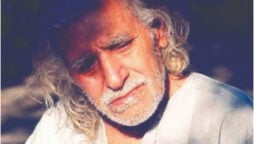
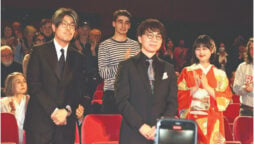
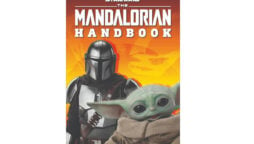

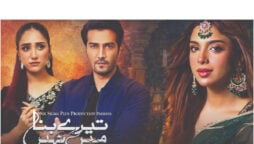


 Read the complete story text.
Read the complete story text. Listen to audio of the story.
Listen to audio of the story.